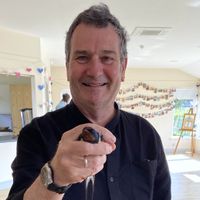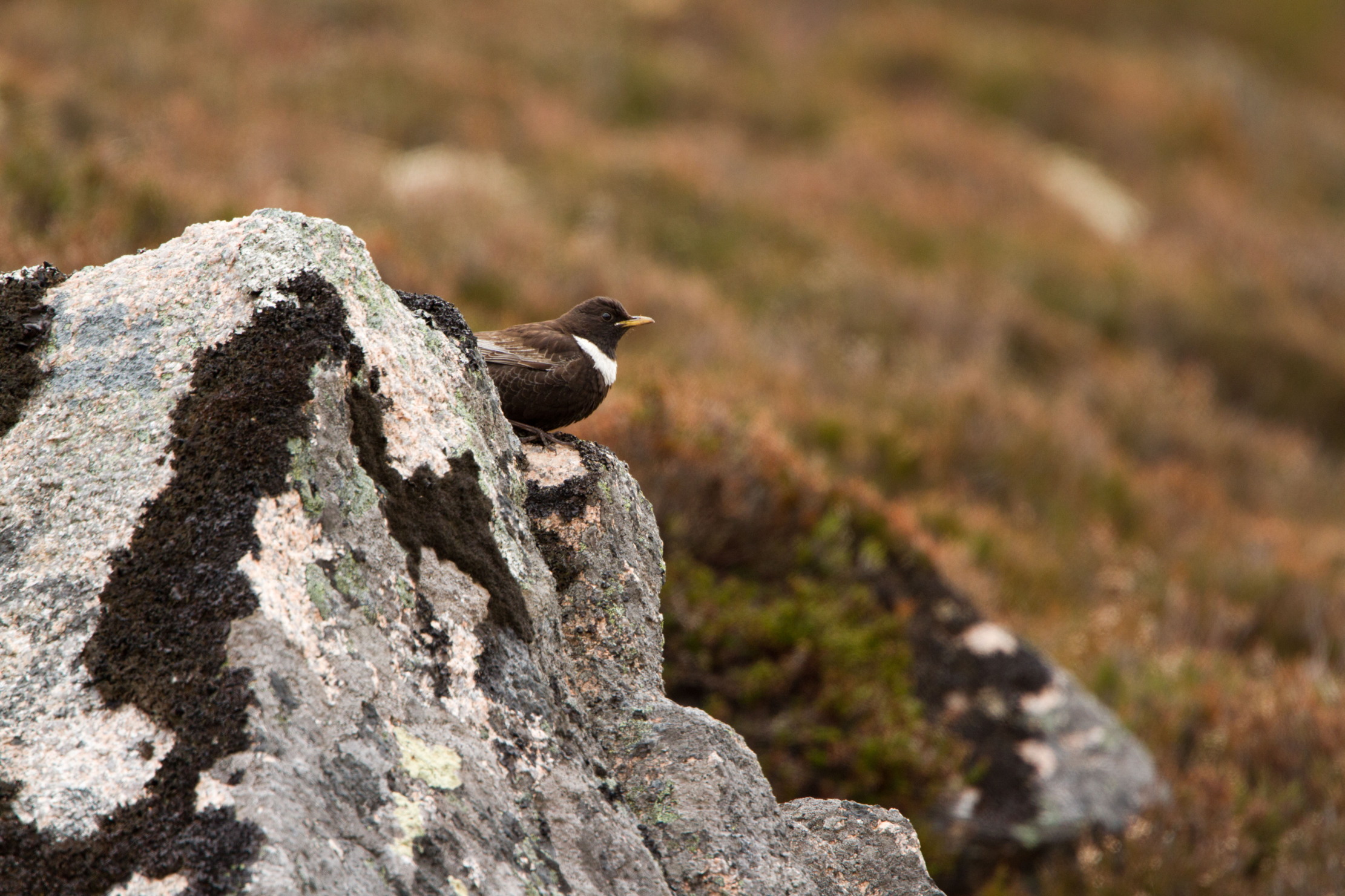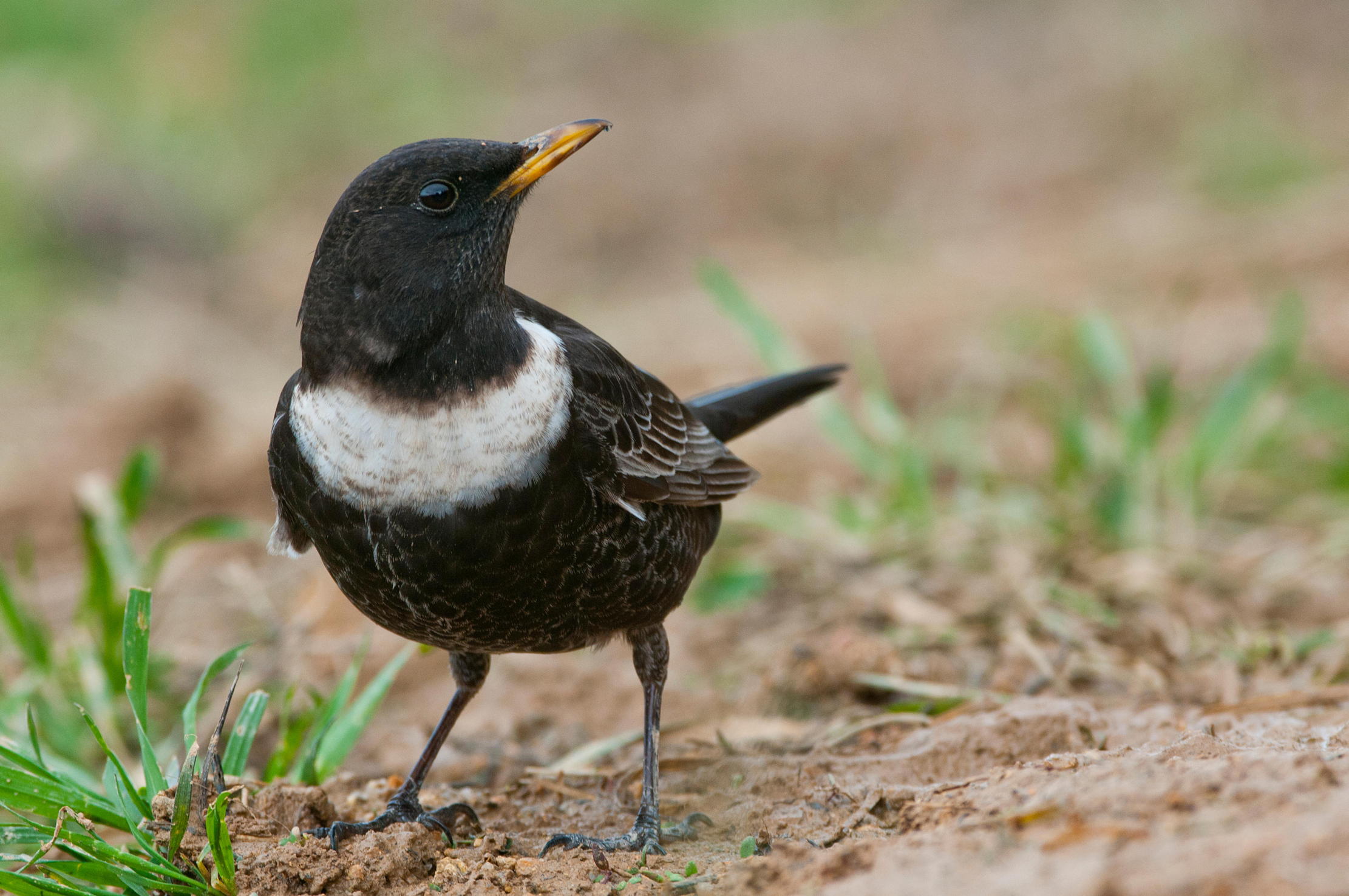The ring ouzel: The mystery behind the common blackbird's feral twin
A master of disguise, inexplicably shy and unpredictably wild, the increasingly rare ring ouzel warrants giving any blackbird a second glance.


Of all the charismatic birds breeding widely in these islands, one of the least known to the British public is the ring ouzel. That anonymity says much about the bird’s appeal to devotees — I have been a fanatic for 50 years — but it also speaks eloquently of the creature.
Ring ouzels don’t live on remote islands as shearwaters do, nor do they confine themselves to the darkness with owls or hide away in dense cover like crakes and rails. They live in plain sight across swathes of our uplands, even visiting many Welsh or English coastlines on migration. The problem is that they do it in disguise.
Meet a ring ouzel on some high fell on a May morning and you’ll understand my point. The bird is a male perched atop the gritstone wall and facing away. He is singing: a short, plaintive, repeated, whistled note that often has the uncanny ability to sound far off, remote. Apart from long wings and frosted edges to some flight and back feathers, the vocalist looks for all the world like any blackbird you see in the garden.

The broad white patch is the key marker of the ring ouzel.
Then he turns. Emblazoned on his chest is the singular distinction of all ring ouzels: a broad white crescentic patch (creamy in females). Instantly, he flies far away and you are left in that moment with the shock of the other, alongside a sense of deepest familiarity and a realisation that our commonplace garden favourite has this unknown feral twin.
The challenge of ring ouzels is that such meetings are rare. There are roughly 1,000 British blackbirds for each ring ouzel and you have to scrutinise scores of likely-looking candidates for every encounter. Even worse, the latter has now acquired the melancholy glamour attaching to population decline.
Until the 20th century, ring ouzels bred widely from Cornwall to Caithness, scattered across an ‘archipelago’ of high-altitude areas. These included Dartmoor, Exmoor, the Brecon Beacons and north Welsh and Shrop-shire hills, into the Pennines, the North Yorkshire moors and up to Scotland to our most rugged high-altitude places, such as the Cairngorm and Monadhliath mountains.
Surveys conducted this century show that the species has fallen massively in numbers and contracted in range. Now, there may be fewer than 7,000 pairs. The causes are unclear, but an illustration of how this plays out on the ground is revealed in W. H. Hudson’s Adventures Among Birds (1913). The author described ring ouzels in the southern Peak District, where he found 40–50 pairs in a few days. Today, that area holds a single couple at the Cheshire/Derbyshire border, possibly the most southerly birds now breeding in England.
Exquisite houses, the beauty of Nature, and how to get the most from your life, straight to your inbox.
What defines their habitat is a subtle mix of features. Ring ouzels love precipitous hill-slopes dotted by boulders or topped with gritstone crags. If there are trees, they are often stunted rowans and birch and the vegetation is low-growing and shrubby, dominated by heather, bracken or gorse. A recurrent element is close-cropped sheep pasture with abundant molehills, which offers an insight into the ring ouzels’ diet of subsoil invertebrates. Adults can be seen flying to a nest full of chicks with a drooping ‘beard’ of worms, like any blackbird in an urban garden.
The similarities between the two species were the key to several older vernacular names for the upland bird. It was known as the ‘mountain thrush’, ‘fell blackbird’, ‘hill chack’ and ‘heather throstle’. Yet the best expression of their common qualities is that strange word ouzel. It was a name used for both species — and even for the river-dwelling dipper, once known as the ‘water ouzel’ — but all drew on the Old English word osle that probably referred to their shared black colour.
'True to their gift for unpredictability, the birds turn up almost anywhere: in coastal dunes, on rugged cliff tops, but also in the middle of golf courses or out-of-season caravan parks'
Together with physical distinctions between blackbirds and ring ouzels, there are differences of temperament and habit. The first species is renowned for its tameness, but the second is inexplicably shy and unpredictably wild. A ring ouzel invariably spots you long before you see it and will fly away amid a clatter of sharp chack-ing calls, until it has vanished on a far horizon, never to return.
The other dominant characteristic of ring ouzels is their status as obligatory migrants. There are almost no winter records in Britain, although they are among the earliest birds to return. Singing males proclaim their territories even in March, with arrival dates now advancing amid climate change.
It is the ring ouzel’s spring transit that arouses deep excitement among birdwatchers and accounts for many of the wider sightings. True to their gift for unpredictability, the birds turn up almost anywhere: in coastal dunes, on rugged cliff tops, but also in the middle of golf courses or out-of-season caravan parks. They often use the high ground dotted across inland Britain as a series of stopping-off places. Equally, I found a spectacular male once near some Cambridgeshire allotments that were probably below sea level.
It is their autumn passage, however, that goes to the heart of their elusive personality. Many thrushes turn from an insect- to a fruit-rich diet in winter, but ring ouzels are specialists. Rowan trees heavy with a gorgeous lode of orange berries draw the south-bound birds.
By late autumn, they cross the Channel and studies suggest they use Europe’s montane regions as stepping stones en route to the high ranges of eastern Spain, including the Sierra Nevada, but also to the Rif and Atlas mountains of North Africa. In both countries, the birds spend their winters among juniper trees, the fruits of which are used to flavour gin.
There is nothing better on a summer’s evening than to watch ring ouzels on their Derbyshire nest slopes. However, I also love to think of them in their absence, perched on a mountain boulder, chack-ing loudly, flirting their long, frosted wings, a weather-eye on the solitary goatherd and his flocks wandering through the Moroccan landscape and its snow-capped peaks on the far horizon.
Mark Cocker is a naturalist and multi-award-winning author of creative non-fiction. His last book, ‘One Midsummer’s Day: Swifts and the Story of Life on Earth’, is out in paperback. A new book entitled 'The Nature of Seeing' will be published next year by Jonathan Cape.
